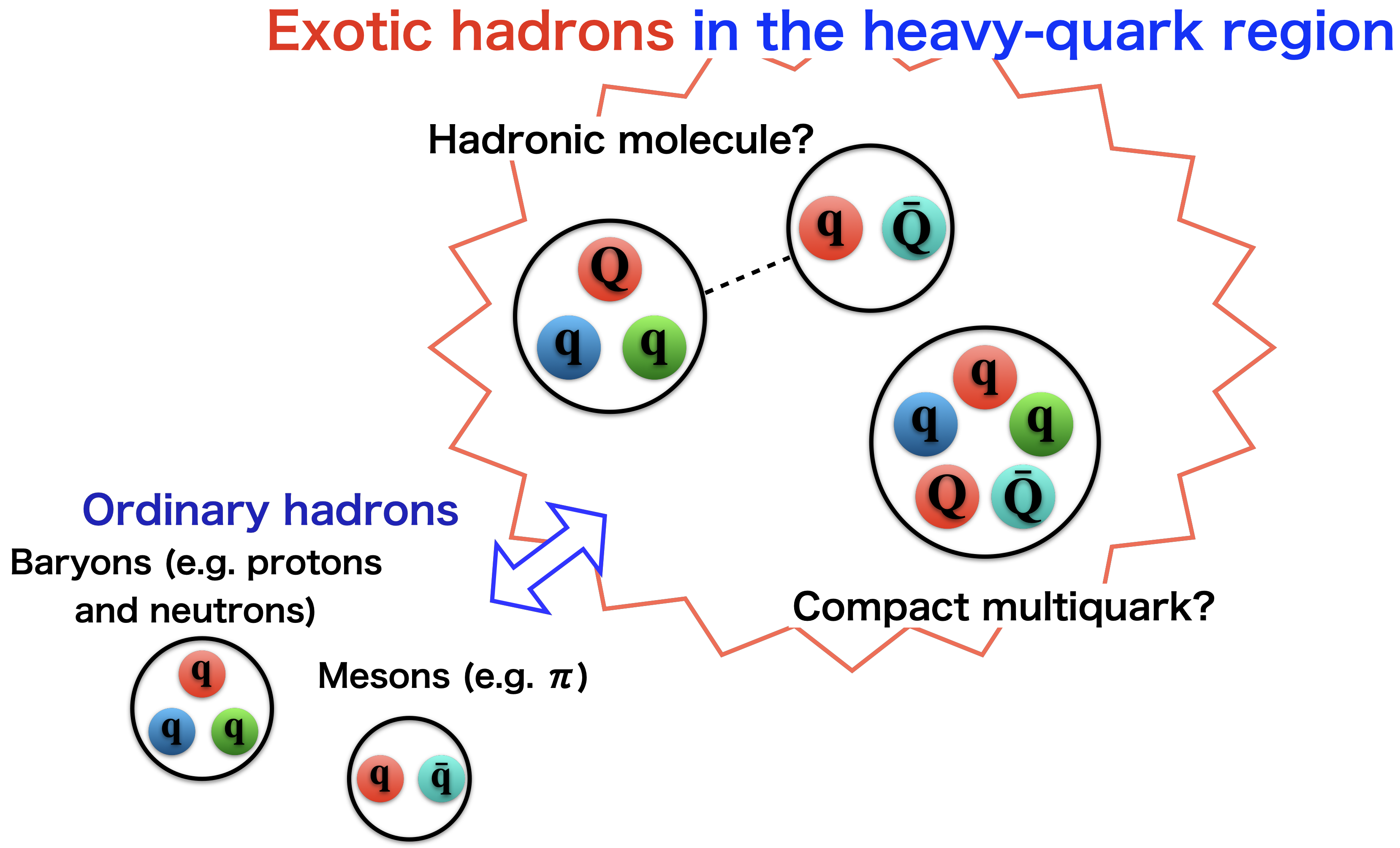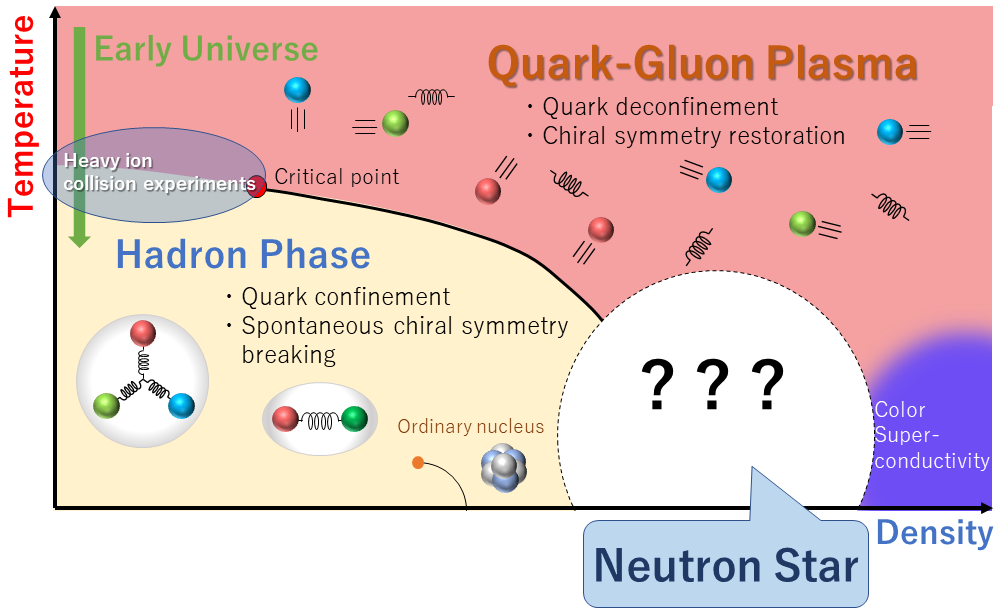Research Content
Hadron structure
(1) Exotic hadrons
Ordinary hadrons can be classified as either baryons (three-quark states) or mesons (quark-antiquark states). But in recent years, “exotic hadrons” which cannot be described by these pictures reported in the accelerator experiments (see figure). They are considered as multi-quark states consisting of four or five quarks including heavy quarks. However, their structures have not been understood yet. In general, the research on (exotic) hadrons is the challenge to “quark confinement problem" which is how matter in the universe is formed from quarks. We seek to clarify the properties of exotic hadrons, analyzing hadron-hadron interactions and the structure based on the effective hadron model and the quark model.

(2) Hadrons containing heavy quarks
Besides exotic hadrons, ordinary hadrons containing heavy quarks have also been found successively in recent years. We study the hadron structures, as well as the exotic ones, through the spectroscopy analyzed by using effective models including heavy hadrons and the quark model.
(3) Scalar mesons
A light-scalar meson composed of two quarks (quark-antiquark) is a promising candidate for a "signal particle" which is closely related to the mass generation mechanism coming from the spontaneous chiral symmetry breaking. However, there have been discussions about the scalar mesons, where they are comprised of four quarks (two quarks and two antiquarks) or composite states containing two gluons. We work on configuration of scalar mesons and experimental inspection by means of effective models.
QCD phase structure at finite temperature and density
We investigate the phase structure of the quark-hadron many-body system at finite temperature and density, in terms of the chiral symmetry and quark-gluon confinement. This research topics includes understanding the mechanism of the QCD phase transition which also causes changes in hadron properties and promoting the interdisciplinary studies with related physics fields.

(1) High-density nuclear and quark matters
To understand high density matters, active investigations are conducted in current and future experiments in the world, such as J-PARC at Tokai, Ibaraki in Japan, RAON at IBS/RISP in Korea, FAIR at Gesellschaft für Schwerionenforschung (GSI) in Germany, NICA at Joint Instiitute for Nuclear Research (JINR), and RIBF at RIKEN in Japan. These experiments are anticipated to produce fundamental information for high-densitiy nuclear matters. Furthermore, X ray and gravitational wave observations of neutron star's properties restrict structures of high-density nuclear and quark matters, because they affect an equation of state of neutron star interiors. We approach this problem by using effective models.
It is suggested that the mass of nucleons (protons and neutrons) consist of the part generated by “spontaneous chiral symmetry breaking” and the other generated by “chiral invariant mass”. Constructing the effective model with the chiral invariant mass for high density matters, we are currently investigating the chiral invariant mass effect by comparing the observation results of neutron stars.

